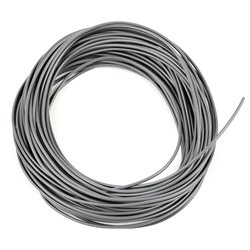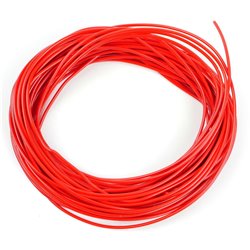Kadee couplings are a popular choice for railway modellers, particularly those modelling in HO and OO gauge....
No products
Product successfully added to your shopping cart
There are 0 items in your cart. There is 1 item in your cart.
Search Tips
Is stranded wire better than solid wire?
In my experience, stranded wire is preferable over solid wire.
Stranded wire is more flexible than solid core wire, which gives you more flexibility when routing cables under your layout.
Also, if a strand of wire should break for what ever reason the electricity will still flow through the remaining strands.
With a solid wire although there is flexibility it is far less supple than stranded wire, making it slightly more difficult to work with. And if that wire should break, that's it, no more power.
Some railway modellers swear by single core solid wire others prefer stranded. As with many things in this hobby there is no right or wrong, it comes down to personal preference.
If you are just starting out I would suggest 7/0.2 wire: this is a seven stranded wire , with each strand of wire being 0.2mm thick (that is 0.008 inches in old money).
Click here to receive the tips weekly in your mailbox. You can unsubscribe at any time.



.jpg)






